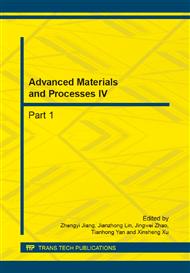p.721
p.726
p.734
p.738
p.743
p.747
p.751
p.755
p.760
Surface Roughness Research in Turning of Damage-Tolerant Titanium Alloy
Abstract:
TC21 is a first high strength and damage-tolerant titanium alloy self-developed in China, which has independent intellectual property. As it is known to all, titanium alloy TC21 is one of the most widely used materials in aerospace. The improvement of cutting quality of titanium alloy is an urgent problem. In this paper, the orthogonal experiment were carried out to study surface roughness of turning TC21. The predictive model of surface roughness in turning TC21 was built by analysis of multivariable linear regression on the basis of experiment. Statistical test results indicated the established predictive model were in highly notable test status and had high reliability. These works provide references for machining TC21.
Info:
Periodical:
Pages:
743-746
Citation:
Online since:
September 2014
Price:
Сopyright:
© 2014 Trans Tech Publications Ltd. All Rights Reserved
Share:
Citation:


